U.S. stock markets have gone bonkers. The Dow Jones Industrial Average ended at its 8th straight record high on Friday. The DJIA is now at record high – above 22,000 – and already people are talking and singing about 23,000, and beyond, as if the musical chairs game will never stop. It will stop eventually, and when it does, many would get burnt alive.
Alan Greenspan, while disagreed that there’s a bubble in the stock market, has screamed his lung out about another bubble. With the 10-year Treasury yield at 2.27%, Mr. Greenspan says he’s worried that the bond market is in a bubble. He said – “The current level of interest rates is abnormally low and there’s only one direction in which they can go, and when they start they will be rather rapid.”
The former Federal Reserve Chairman admits that he doesn’t know when the bond bubble will actually burst. But he did make a point that the burst will be quick and take the market by surprise – “When they move higher they are likely to move reasonably fast. We are experiencing a bubble, not in stock prices but in bond prices.”
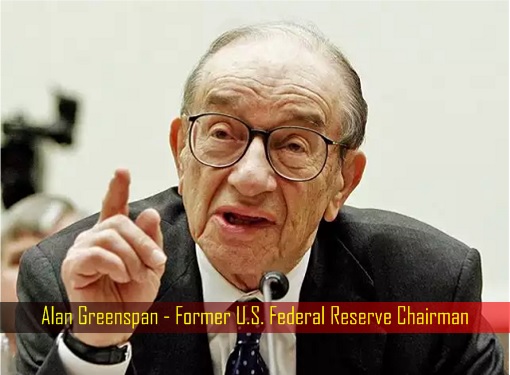
So the problem is with the bond market, and not the stock market, right? Wrong, because when the bond-market bubble collapses, long-term interest rates will rise, and the stocks will suffer too because surging real interest rates will challenge the valuation of U.S. equity (stocks) prices. Gosh, that’s easy. Just tell the Federal Reserve not to raise the damn rate.
Sorry folks, the Fed can’t do that. The DJIA is doing a roaring business because companies’ earnings beat analysts’ expectation, which in turn means U.S. employers hired more workers, whom in turn have been spending more. The strong jobs report, unfortunately, will clear the way for the Federal Reserve to announce a plan to start shrinking its US$4.2 trillion bond portfolio.
Effectively, the Federal Reserve will raise rates for the third time this year in December, to fight inflation. In fact, Mr. Greenspan thinks the market is moving into stagflation (worse than inflation) not seen since the 1970s. Oh, guess what, we’re about to enter the 10-year-cycle since the U.S. 2008 subprime mortgage crisis. It’s always interesting to revisit the past market crashes.
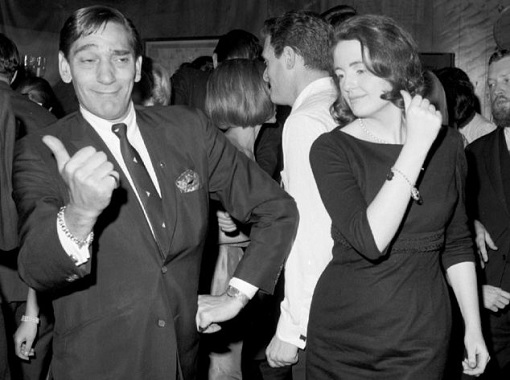
Every decade, the global markets have this party where everybody enjoys themselves too much that not many care to look at the clock. In the late 1960s the party was for the “Nifty 50” American companies like Disney, McDonald’s, IBM, Texas Instruments and Coca-Cola. Investors simply moved from “value investing” to a “growth at any price” mentality.
Right before the stock market collapse in 1973-74, where the Dow Jones Industrial Average fell 45% in just two years, the “Nifty 50” average P/E (price per earning) was at 42, more than twice that of S&P 500 Index’s P/E (at only 19). To get a glance of how crazy the market was, consider this – Polaroid was trading at a P/E of 91; McDonald’s at 86; Walt Disney at 82; and Avon Products at 65.
In the late 1970s, the party was for natural resources, from gold to oil. The demand for crude oil had turned to surplus, plunging from over US$35 per barrel to below US$10. From United States to Europe to Japan, oil consumption had fallen 13%. The serious glut would see a 6-year decline in the price of oil. The panicked OPEC slashed oil production several times.
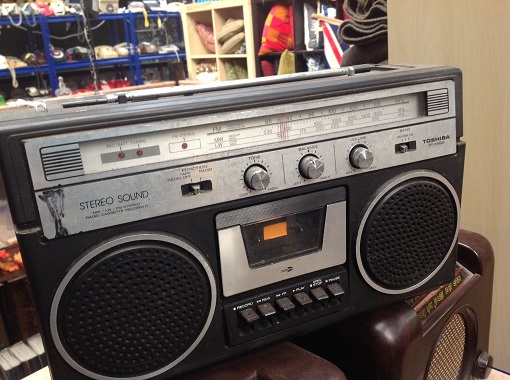
In the late 1980s, the party belonged to the Japanese – the “Bubble Economy”. Japan’s “Bubble Economy” era occurred at the end of its three-decade old “Economic Miracle” that began after World War II and saw the country’s fortunes blossom as it became the world’s automobile and electronics manufacturing powerhouse. At its peak, a house in Tokyo cost well over US$2 million a pop.
In the late 1990s, the party was none other than the dot-com boom. Believing that technology would lead to the creation of a “New Economy”, investors and punters snapped up dot com companies, even though they had negative earnings. When the technology stock bubble finally crashed, the NASDAQ plunged from 5,000 to nearly 1,000, dragging the U.S. economy with it.
In the late 2000s, the party was over housing, properties or real estate. Investors and speculators flocked to mortgage-backed securities (MBS) and collateralized debt obligations (CDO), leading to the rise of subprime lending. The U.S. household debt of close to 140% eventually made borrowers difficult to refinance their loans when the housing bubble burst.
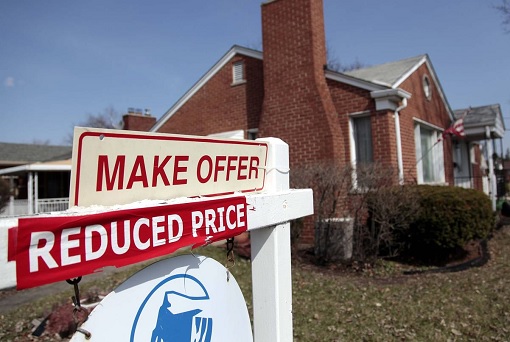
Today, in the late 2010s, we’re looking at another cycle, same party. This time, the bubble could be the technology again. The dot-com boom – and crash – of the 1990s have seen the emergence of the survivals such as Apple and Google. Unlike the 1990s, these giants have real earnings. But like every other crashes, the tech giants appear to be reaching their peak.
The fact that 7 of the world’s 10 most valuable companies are in the tech sector isn’t something to be proud of. This scenario is like the late 1999 peak before the dot-com party was over. This looks like too many eggs in the same basket. The complacent investors and speculators say that Apple will become the first trillion-dollar company, so everyone should just relax.
But at the same time, the fund managers and investors burnt the midnight oil, desperately packaging their products to the ignorant customers. They packaged Facebook, Amazon, Netflix and Google as FANG. When things didn’t work out as expected, they moved on to the FAAA group (Facebook, Alibaba, Alphabet and Amazon). But the acronym contest didn’t stop there.
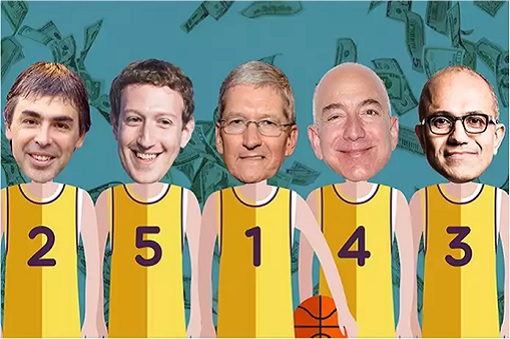
There was FAAMA aka FAAMG (Facebook, Apple, Alphabet, Microsoft and Google or Alpahabet). Heck, Citigroup was perhaps the most creative of all, when it pulled out the FANTASY group – Facebook, Amazon, Nvidia, Tesla, Alphabet, Salesforce.com and Yahoo. Bloomberg protested and said Citigroup cheated because Yahoo is now owned by Verizon.
So Bloomberg came up with FANTASIA – booted Yahoo and included Intel and Apple. Can you see the problem here? The fund managers and investors, in their dependency of tech giants to paint a bullish market, has resorted to cherry-pick performing tech stocks and packaged them as a sexy product. This was the same way they packaged BRICs (Brazil, Russia, India and China) not many moons ago.
They even have BAT (Baidu, Alibaba and Tencent) in China, again, all of which are technology stocks. True, the stock prices of tech giant today are not as widely overvalued as in 1999. Technology stocks today are up 350% as compared to the insane 1,900% seen before the dot-com burst. But that’s because the U.S. governments have tightened the bolts and nuts on regulations for companies planning to go public.

In fact, tech giants, after dominating internet search and e-commerce, have limited space of growth so much so that they are targeting other unrelated industries such as publishing, food and even automobiles. It’s a matter of time before antitrust agencies step forward and stop such unfair and crazy monopoly. So watch for more tech earnings to start falling short of analyst forecasts.
The point is, despite a beautiful market – new highs, good momentum, strong earnings – there are actually companies that had zero earnings, even losing money, but outperform those companies that were making money. In a nutshell, the valuation levels of stocks today do not reflect the actual revenues. Like it or not, the super volcano is waiting to erupt.
Even Goldman Sachs found that the last time valuations were this high, 10-year returns on the S&P 500 have been either in the single digits or negative 99% of the time. No bulls market lasts forever and the “inevitable serious correction” is about to happen. The question is whether you have gotten out of the party when the room becomes a slaughter house.
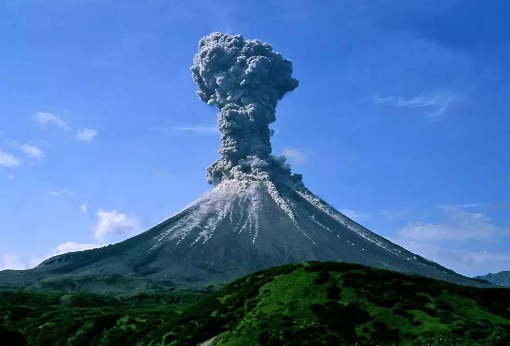
Other Articles That May Interest You …
- Finance Minister Najib Drove Reserve To Its Lowest In Asia, Unable To Pay $600 Million Debt
- Australian Property Bubble – Get Out Now – Before It Burst
- The Magic Number 2020 – Oil Price Will Be Stuck Below $60 Until Then
- Internet Crackdown!! – WhatsApp Being Blocked In China
- Microsoft Announces 4,000 Jobs Cut – 75% Employees Abroad To Be Notified
- China Invasion – Top 10 American Iconic Brands Now Owned By Chinese
- 10 Companies That Control Almost Everything You Buy & Eat
- Debts & Deficits – 21 Currencies That Have Gone Bust

|
|
August 7th, 2017 by financetwitter
|


|

|

|

|

|

|




























Comments
Add your comment now.
Leave a Reply